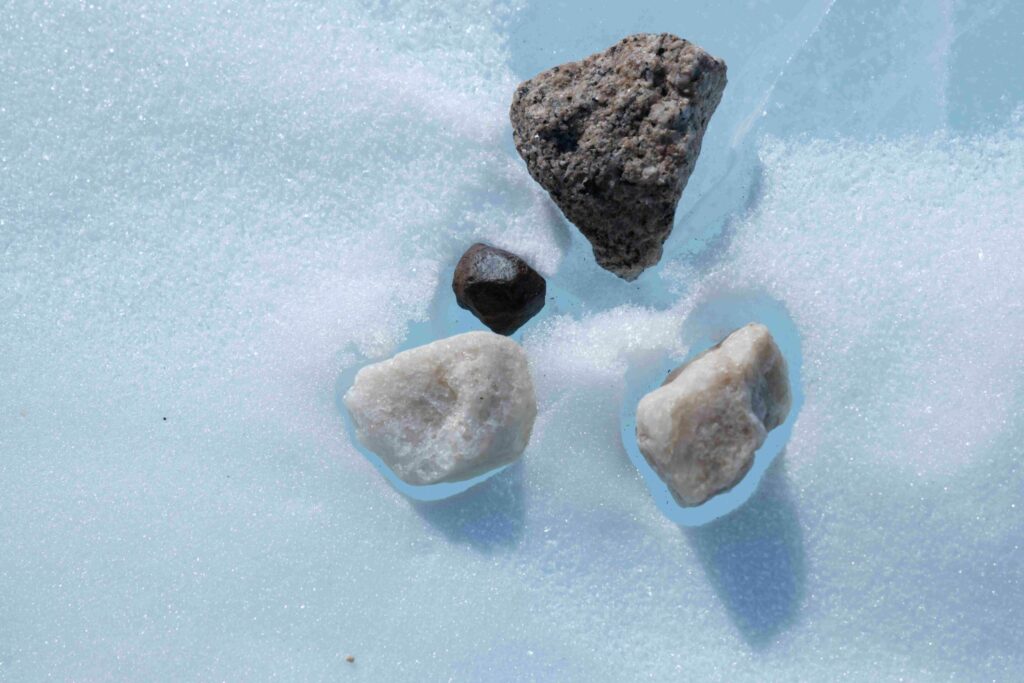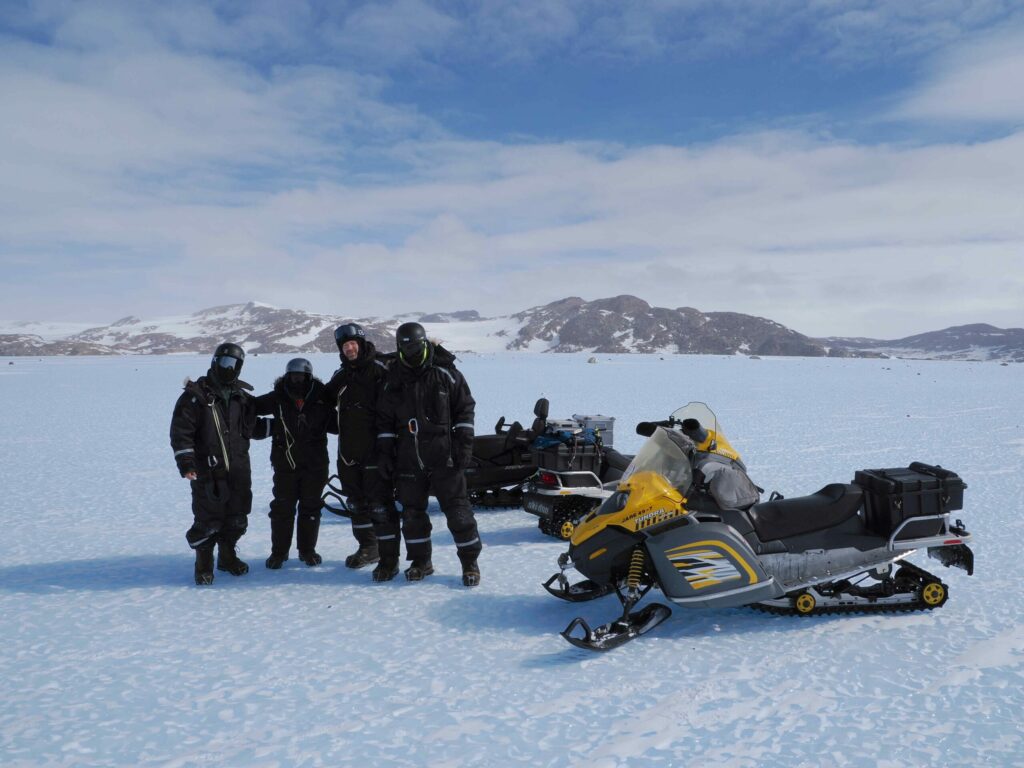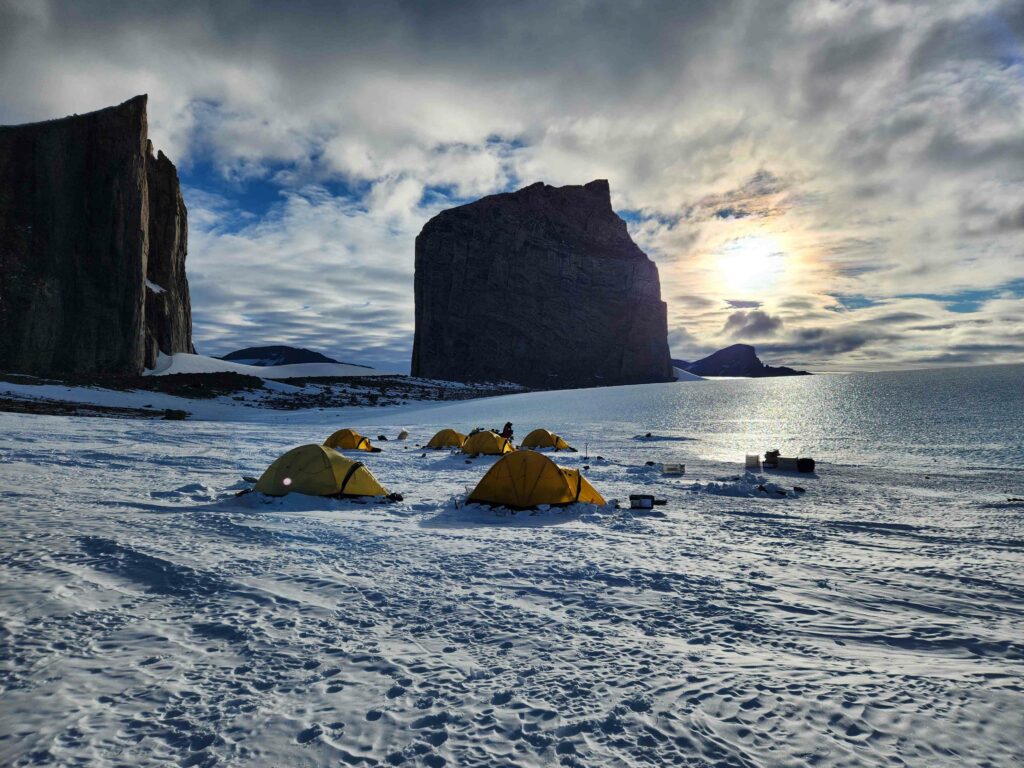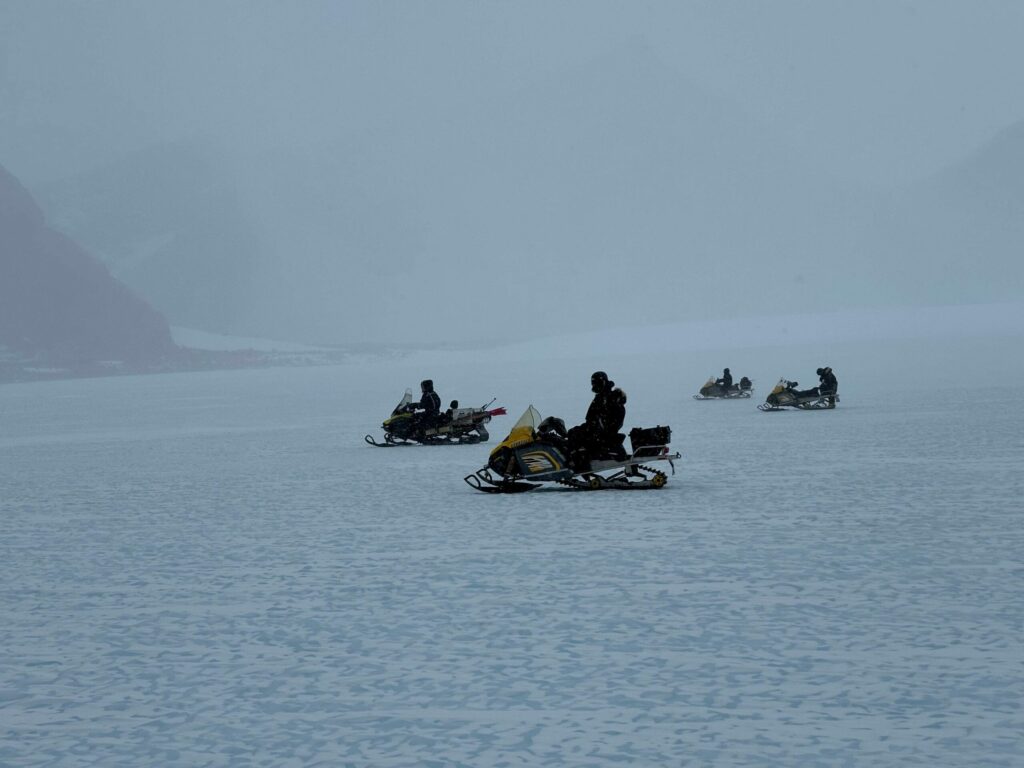An international team led by Belgian scientists has found a collection of Antarctic meteorites during a research expedition last December. Each new meteorite contributes to the research on the history of the solar system and the formation of Earth and other planets.
The team set out from Brussels in November via Cape Town in South Africa and has just returned after a successful mission to Antarctic where they used the Belgian Princess Elisabeth Antarctica station. The station is the first zero-emission polar research station in Antarctica and is managed by the International Polar Foundation (IPF) which also prepared the mission.
While previous meteorite recovery missions focused on ice areas closer to Belgium’s Antarctic station, the mission this time took place in the remote Belgica Mountains of Antarctica, more than 300 km southeast of the research station.
The Belgica Mountains, located in the Queen Maud Land region in East Antarctica, were discovered by a Belgian expedition team during the International Geophysical Year Polar Expedition in 1958 during a reconnaissance mission by airplane. The mountains were visited again by Belgian scientists in the 1960s, but have not been visited by a Belgian scientific team since then.
The research team consisted of Professor Steven Goderis of VLB, Professor Vinciane Debaille and Dr Gabriel Pinto of ULB, and Dr. Hamed Pourkhorsandi at the Institut de Recherche pour le Développement in France. They were supported by IPF field guides Martin Leitl and Paul-Philippe Dudas.

Meteorites, credit: IPF
Blue ice fields
Meteorites can be found on blue ice fields near mountain chains where the ice is pushed up and eroded by strong winds. The process has formed a blue surface that contrasts with the more common white Antarctic surface.
The team recovered 115 Antarctic meteorites weighing more than 2 kg in total and several thousand micrometeorites, cosmic dust particles less than 2 mm in diameter. Meteorites hold valuable information about the formation and evolution of the solar system.
More impressive than the number were the types of meteorites found. The trove included at least two achondrites (stony meteorite representing planetary mantles), and several carbonaceous chondrites, the most primitive meteorites similar in composition to the original material of the Solar nebula, the giant, spinning cloud of gas and dust that formed our solar system about 4.6 billion years ago.
“Each new meteorite provides an essential piece of the puzzle we are trying to solve,” said Professor Goderis about the importance of the samples he and his colleagues found. “We live in a dynamic Solar System, where impact cratering is an important geological process. The current state of the Earth results in part from collisions that have taken place throughout its evolution.”
“Based on some meteorite fragments, we can learn about planetary differentiation and collisions taking place in the early solar system, and in other fragments we find prebiotic molecules required for the evolution of life,” added Professor Debaille.

The research team. From left to right: Gabriel Pinto, Vinciane Debaille, Steven Goderis, and Hamed Pourkhorsandi,” credit: IPF. “Generally, team members don’t like to take of their masks and goggles in the field, as it leaves gaps that may be prone to frostbite.”
How did you find these small meteorites and even micro - meteorites?
“The meteorites are found scattered on the blue ice surrounding the Belgica Mountains,” Professor Goderis told The Brussels Times. “Most are at least a centimeter in diameter. We would either walk or drive snowmobiles across the ice fields in a systematic manner and use our eyes to determine whether we found a meteorite or a local rock fragment brought up by the ice.”
Are there more meteorites in Antarctica or are they more interesting than those from other continents as regards information about the solar system?
“Antarctica is the world’s most prolific site for collecting meteorites, with more than 60% of all meteorites (approximately 80,000) collected on Earth so far found at the surface of the ice sheet,” he replied.
“Antarctic meteorites are found in blue ice areas, which represent about 1% of the Antarctic surface, where layers of snow and ice are removed from the surface through a combination of ice flow processes and wind, exposing meteorites that were once embedded in the ice.”
Many of the meteorite stranding zones have likely not been found or fully explored yet, with an estimated 300,000 to 850,000 meteorites remaining to be collected.
Antarctic meteorites can be very old compared to those from other continents and are often extremely well preserved due to their storage in ice. They are also reserved for scientific purposes under the Antarctic Treaty to which Belgium is a signatory.

Tents in the base camp, credit: IPF
Conditions at the basecamp were harsh, even for Antarctic summer, with temperature going down to -31˚C with the wind chill due to strong winds. How did the crew cope with the cold in tents?
“The team was on site for 21 days, with 10 days at the Belgian Princess Elisabeth station before and after the mission for preparation, initial processing and packing.”
“Some days are colder than others, but specialised clothing and equipment are key,” he explained. “Around the summer solstice, the sun is visible 24 hours per day, but when the sun disappears behind mountain summits for a few hours, temperatures typically go down by 10˚C, so adapting a daily schedule to the cold proved essential as well.”
How long time did it take to reach the Belgica mountains leaving from the polar station?
“Prior plans for travel by container convoy had to be abandoned for air transport due to difficult terrain. The flight crew of an international research program offered to take us to the primary site of research, so we could actually reach the final destination on the schedule date.
Have you already studied the meteorites? What do you expect to learn which you didn't know before?
“We have studied the meteorites in the field with the naked eye and measured their magnetic susceptibility,” Professor Goderis replied. “This gives an initial idea of what was collected in terms of meteorite types.”
The more refined classification will only take place after defrosting, sawing and detailed chemical classification at the Royal Belgian Institute of Natural Sciences in Brussels. “Only then can we determine precisely what was found and how these extraterrestrial rock fragments will help us to address some of the many questions remaining in the planetary sciences.”
The most beautiful pieces will be put on display for the public to enjoy but it may take some time. “Science is unfortunately not a fast process, but we expect some of these meteorites to be included in current and future exhibitions as soon as their classification and initial research studies have been finalised.”
M. Apelblat
The Brussels Times

